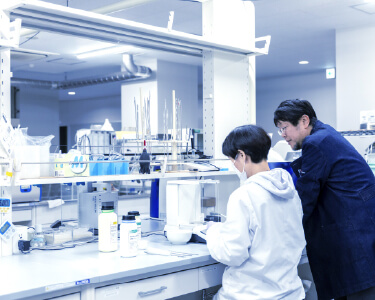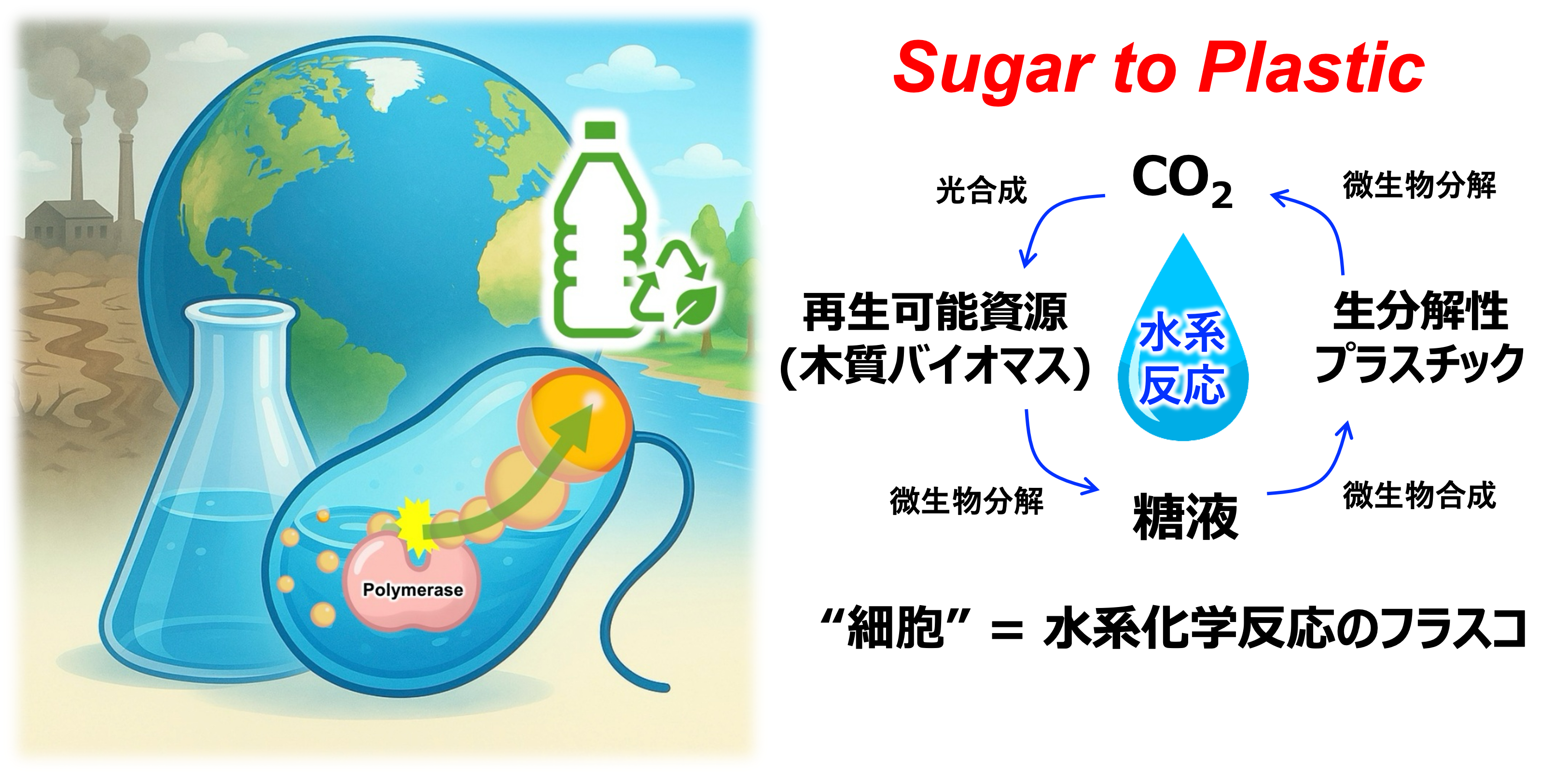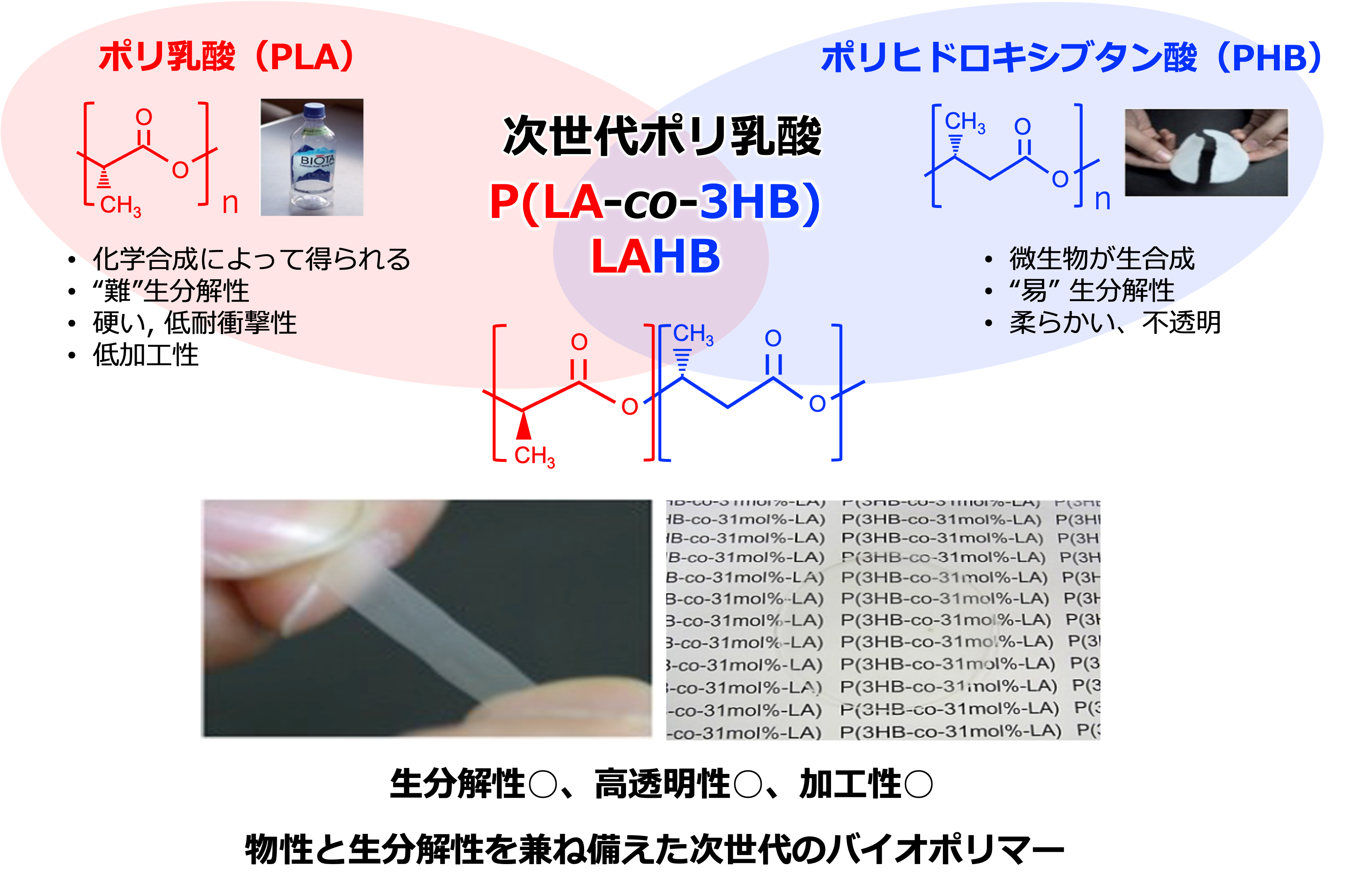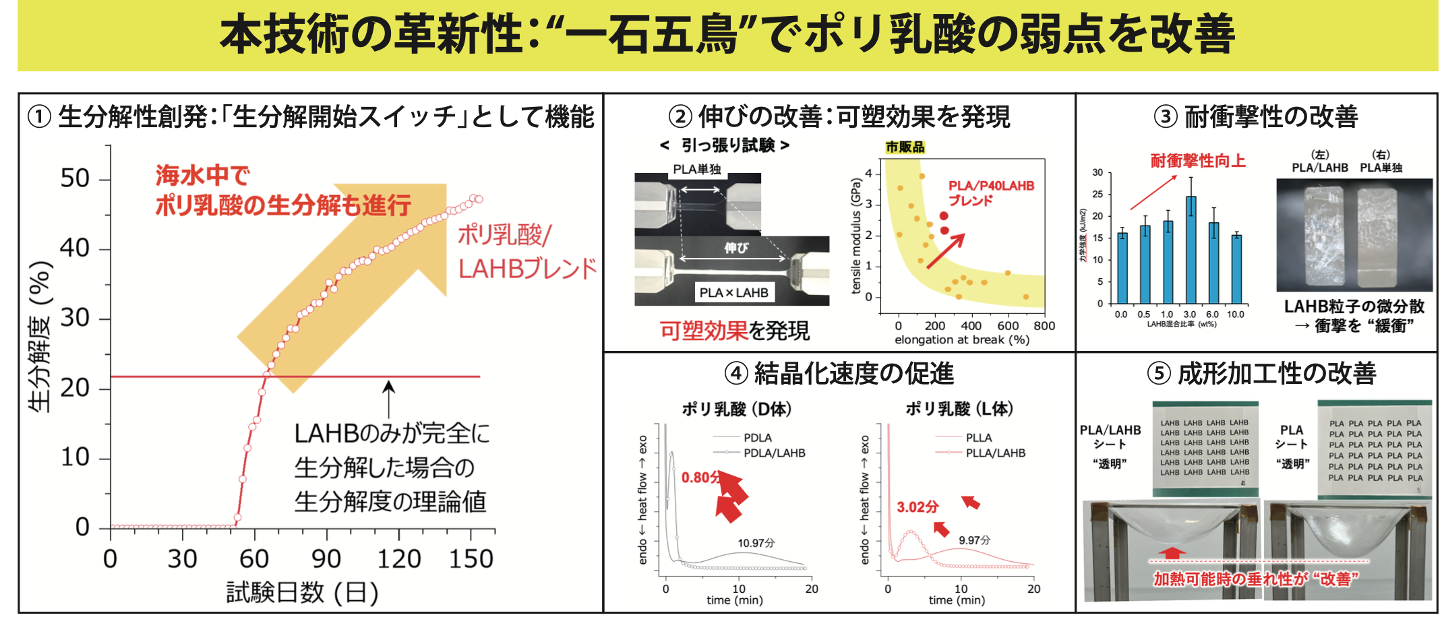

Research
Creating biologically active substances and biodegradable bioplastics in cell culture flasks filled with "aqueous" chemical reactions
It can be said that the birth of life on Earth, the “water planet,” was nothing short of a miracle. Life systems are composed of cells filled with water molecules. Each cell can be seen as a flask in which biochemical reactions occur within an aqueous environment, orchestrated by biocatalysts (enzymes) encoded on the genome.
In fact, by using this cellular flask, it is possible to generate a wide variety of valuable substances, such as pharmaceuticals, agrochemicals, and chemical materials—a field known as synthetic biology. Through a synthetic biology approach, we are developing bio-chemical processes that create novel functional substances from renewable resources.
For example, within these cellular flasks, we produce biodegradable bioplastics derived from renewable resources. These bioplastics, synthesized from carbon dioxide, are environmentally circular materials that can decompose in rivers and oceans. By doing so, we aim to contribute to a kind of “planetary medicine,” turning the negative legacy of the massive plastics industry—global warming and pollution—into a positive impact for the Earth.
About research
Creation of the Environmentally Circular Bioplastic “LAHB”
Plastic pollution has become a global crisis, transcending national borders. By 2050, it is predicted that the weight of plastics in the oceans will exceed the total weight of fish. In the Asia-Pacific region in particular, plastic waste is already causing annual economic losses of about one billion dollars in fisheries, aquaculture, and tourism. Moreover, microplastic contamination has been detected in roughly 80% of the world’s tap water, and it is estimated that on average we ingest about five grams per week—the equivalent of a credit card.
As a sustainable solution to this worsening problem, we have developed a novel biopolymer, LAHB, composed of lactic acid (LA) and 3-hydroxybutyrate (3HB). This innovative material is synthesized by microorganisms using plant-derived sugars as feedstock. Unlike conventional polylactic acid (PLA), which biodegrades sufficiently only in limited environments such as industrial composting, LAHB naturally decomposes across diverse environments, including the oceans. Remarkably, its biodegradability has even been confirmed in the deep sea, where degradation is typically difficult to achieve.
As a truly “nature-returning plastic,” LAHB represents a sustainable alternative to conventional plastics, offering new hope for addressing both marine plastic waste and microplastic pollution.

LAHB Improves the Weaknesses of Polylactic Acid (PLA)
Polylactic acid (PLA) is the most widely produced bio-based polymer in the world, and its production has been steadily increasing as a carbon-neutral material. However, PLA has long suffered from material drawbacks such as being rigid yet brittle and difficult to process, which have limited its applications. More recently, its inability to biodegrade in natural environments—particularly in the ocean—has become a serious concern.
We have demonstrated that LAHB functions as a modifier to overcome these weaknesses of PLA. Remarkably, adding only a small amount of LAHB to PLA improves processability and impact resistance, while also enabling biodegradability in marine environments. This breakthrough overturns the conventional belief that “PLA does not degrade in the ocean,” and paves the way for PLA to evolve into a tougher and more environmentally compatible material.
A new class of bioplastics—combining PLA, the “first-generation” bio-based polymer, with LAHB, a next-generation polymer—offers both reduced environmental impact and improved usability. This innovation represents a major step toward realizing a truly sustainable, circular society.

Affiliated researchers
-
Principal Investigator (PI)
Seiichi TAGUCHIProfessor (Special Appointment)


